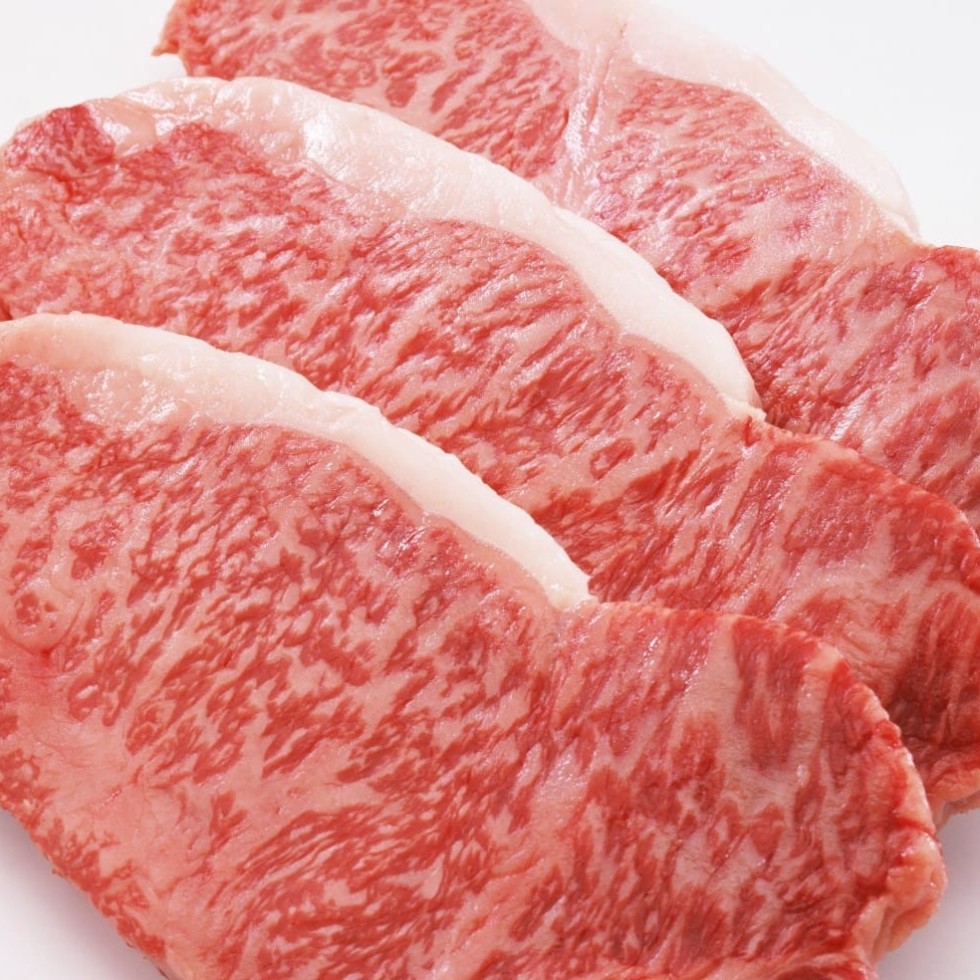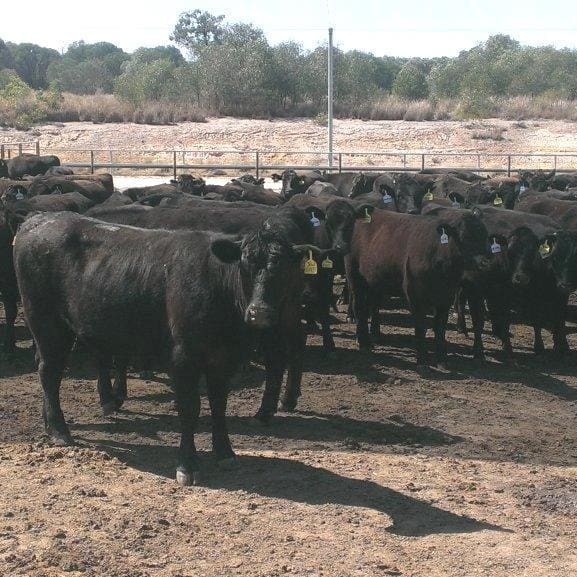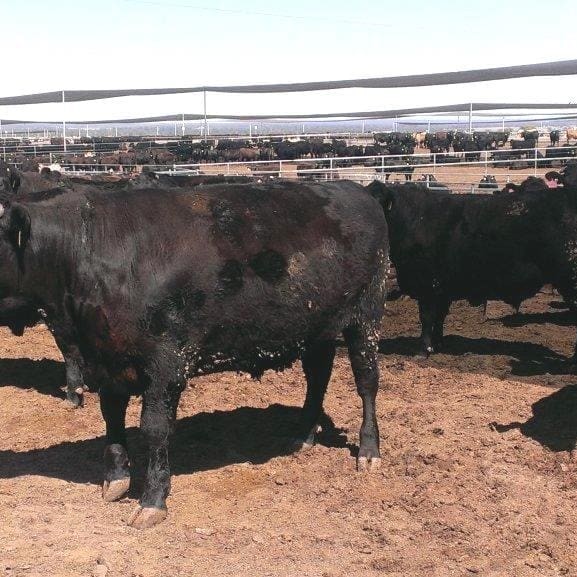 One of the stand-out performers during the big downturn in cattle prices this year caused by drought pressures and the southwards flow of northern cattle defaulting out of live export has been F1 Wagyu feeder steers.
One of the stand-out performers during the big downturn in cattle prices this year caused by drought pressures and the southwards flow of northern cattle defaulting out of live export has been F1 Wagyu feeder steers.
While flatback British-type feeders came under significant price pressure over the past six months, falling to a low point around 170c/kg in May (NLRS data), F1 Wagyu feeder prices have shown no price correction whatsoever.
In today’s market where Angus feeders have recovered a little to around 200c/kg ex Southern Queensland* , there is still a clear 100c/kg liveweight price difference between F1 Wagyu x Angus feeders carrying the right genetics, with prices currently 300-310c/kg liveweight.
It is this big point of difference that a number of large Wagyu beef supply chains are currently emphasising in their efforts to build more secure feeder supply relationships.
That premium is worth an additional $350-$420 in value on a typical 350-420kg F1 steer going into the feedlot this week.
One of the companies seeking to stimulate Angus breeder interest in devoting a portion of their cow herds to F1 Wagyu production is the Stanbroke integrated supply chain based at the company’s Grantham abattoir in southern Queensland.
Livestock manager Richard Sheriff said the company had moved steadily into a Wagyu F1 beef supply chain program over the past five years.
Stanbroke currently has about 10,000 F1 Wagyu x Angus F1s on feed at its feedlot near Chinchilla, ranking third largest in size among Australian Wagyu feeders, behind AA Co and Rangers Valley.
The company is working towards building awareness among Angus breeders of opportunities to cash-in on the distinct premiums by mating a percentage of females in well-performed Angus commercial herds to Wagyu bulls – either by natural mating or AI.
 While Stanbroke does not engage in formal ‘breeding contracts’ with its F1 feeder suppliers, Mr Sheriff said the company was a strong and consistent competitor in the market for suitable F1 cattle on a regular basis, and was happy to provide genetics advice to interested breeders on appropriate Wagyu sire lines. This service was provided through well-known genetics consultant, Greg Popplewell.
While Stanbroke does not engage in formal ‘breeding contracts’ with its F1 feeder suppliers, Mr Sheriff said the company was a strong and consistent competitor in the market for suitable F1 cattle on a regular basis, and was happy to provide genetics advice to interested breeders on appropriate Wagyu sire lines. This service was provided through well-known genetics consultant, Greg Popplewell.
Stanbroke also operates large Angus branded beef programs, fed through the company’s Chinchilla feedlot, and some of its existing Angus feeder cattle suppliers had moved into an F1 ‘extension’ in their breeding programs.
suppliers had moved into an F1 ‘extension’ in their breeding programs.
“For example, one of our large regular Angus suppliers has recently bought a line of Wagyu yearling bulls, and will mate a percentage of his heifers to them later this year, to produce F1 terminal steers and heifers to supply to us in a couple of years’ time,” he said.
Mr Sheriff stressed that Stanbroke was not asking any dedicated Angus breeder to ‘abandon’ their current purebred material genetic base, but simply to turn-off all the resultant F1 steer and heifer progeny for feeding programs as terminal crossbreds.
‘It’s a second string to their bow: we’re not trying to displace their current Angus cow herds,” he said. “But at a dollar a kilo liveweight advantage going into the feedlot this week, there is a very big incentive for any Angus breeder to consider devoting his heifers to an F1 breeding program each year.”
While the ‘margin’ between a straightbred Angus and an F1 feeder steer can wax and wane a little through the year, it had averaged 80c to 150c over the past year or so, Mr Sheriff said. In the heifer market, F1s were perhaps 80c/kg better off, he suggested.
Stanbroke has recently expanded capacity at its feedlot on Queensland’s western Darling Downs, with capacity now out to 29,000 head, from 24,000 head earlier. That means more than one third of Stanbroke’s total feeding operations, based on one-time pen occupancy, is now devoted to Wagyu production.
With Wagyu fed for a minimum of 300-350 days, pen occupancy becomes an issue, but the latest feedlot expansion means the company can continue to expand its Wagyu business, Mr Sheriff said.
As a result, it is aiming to secure a greater proportion of its feeder requirements through these closer relationships with commercial Angus breeders, rather than simply going into the spot market.
Mr Sheriff said another attraction to breeders, beyond price, was Stanbroke’s strong and growing supply chains feeding into international markets for Wagyu beef, which meant the company was a strong and consistent competitor in the feeder market for the right cattle.
“The drought and cattle oversupply did not affect the Wagyu cattle price this year one bit. It was very obvious, and it’s one of the points we are emphasising to breeders of F1 cattle supplying our program,” he said. “The volatility isn’t there, the way it is in many other markets, and that presents an element of greater price security to breeders.”
He said the international success and deep penetration of Stanbroke’s Diamantina Wagyu brand also gave producers more confidence in the brand program, which was very much about pulling-through demand from large, regular international customers, rather than just operating in a commodity market.
Mr Sheriff said while there was nothing wrong with Wagyu F1 programs based on other breeds like Murray Grey, Shorthorn or dairy genetics, in Stanbroke’s case it saw value also, in the ‘Angus’ side of the crossbred, both for branding purposes, and marbling performance.
“By having an Angus base, we think we are decreasing the risk of moderating marbling performance in an F1, than if we were using other maternal lines,” he said.
Ideally, Stanbroke is directing cooperator Angus breeders to use bigger-framed Wagyu sires that are known performers in marbling expression in F1 calves. Benchmark F1 sires like Michifuku are widely used through the Stanbroke program.
“In the end we are looking for a 400kg carcase after a certain time on feed, so we need an Angus cow that is structurally and genetically sound to provide the basis for that long-feeding program. We don’t want a 350kg carcase after 350 days, we want carcases 400-420kg, producing consistent marbling scores of 5-6 or better,” he said.
F1 feeders are ideally 350-420kg at 14 months, going onto feed.
Mr Sheriff said there was a misconception that Wagyu x Angus F1s are much lighter than straightbred Angus at weaning.
“From our experience, we're finding that with improved sire lines coming through the Wagyu industry, that 20kg liveweight difference figure that once existed is now reduced to only 5-8kg, a lot of the time. That’s insignificant, when you’re looking at $1 a kilogram price difference,” he said.
Another attractive aspect of F1s from the lotfeeder’s perspective was their toughness, and resistance to respiratory problems.
“We just do not see the incidence of respiratory disease with the Wagyu F1 that is often evident with straightbred Angus cattle, and that’s reflected in performance. It provides us with another reason to extend more into F1 feeding, and its another part of the reason why that $1/kg premium exists,” he said.
One of the factors that’s been discussed across the Wagyu industry recently in terms of the current interest being shown in Wagyu F1 programs based on Angus is that the opportunities for dairy x Wagyu F1 programs based on Holstein heifers appears to be under some pressure.
Demand and high prices ($1600-$1800/head) for purebred Holstein heifers for live export to Russia and China is again growing, and some joinings that previously saw Holstein females AI-mated to Wagyu bulls are now swinging back to milking heifer production for the live export market. Potentially, that could put a hole in F1 Wagyu x Holstein production, industry speculation suggests.
There are a number of F1 dairy steer alliances in existence, including Stockyard, Rangers Valley and Dairy Beef Alliance (Security Foods).
Meat market demand drives F1 price
Australian Wagyu Association councillor and general manager feedlots with the Australian Agricultural Company, Greg Gibbons, said the resilience of Wagyu F1 prices during this year’s drought reflected the fact that F1 feeders were still well under-supplied, relative to export and domestic demand for Wagyu beef.
He said that prices around 300c/kg liveweight for F1s had been fairly consistent over the past two years or more.
He stressed, however, that F1s had to carry appropriate Wagyu paternal marbling genetics in order to qualify for the full premiums. Most Wagyu beef supply chains had lists of acceptable Wagyu sire lines for their programs.
While current pricing for feeders reflected a considerable shortage compared with demand for Wagyu beef generally, there had been a lot of Wagyu herd bulls sent into breeder paddocks over the past 12-18 months, suggesting that supply of F1s might go somewhat closer to matching beef demand some time soon. How much, if any, impact this has on feeder price remains to be seen.
AA Co currently has 34,000 Wagyu on feed, about 31,000 of which are F1 cattle, either company-bred or sourced externally.
Given that about 20,000 F1s are live exported to Japan each year, together with current numbers on feed at AA Co (31,000), Rangers Valley (10,700) and Stanbroke (10,000), it suggests that there are more F1s being produced today than at any other time in Australia’s history. Yet feeder prices remained very robust, Mr Gibbons said.
“It’s logical to assume that a greater proportion of those F1s today are coming through Angus cow-herds, he said.
Fullbloods also highlight big price differentials
At the other end of the Wagyu production spectrum, Fullblood Wagyu producers are also highlighting ‘enormous’ premiums available for breeding 100pc Japanese genetics Wagyu feeder cattle.
In an advertisement currently appearing on Beef Central this week, Ginjo Wagyu principal Mike Buchanan is encouraging cattle producers to consider the advantages of breeding Fullblood Wagyu feeders, which he says are currently making 450c/kg liveweight from Wagyu supply chains focussing on Fullblood production, as opposed to 180c/kg for ‘conventional’ feeder cattle.
Ginjo is offering packages of Fullblood cow and heifer ‘Starter herds’ for sale via this website (click here to view).
* James Maclean from supply chain managers, Allied Beef in Toowoomba, this morning quoted better quality-bred Angus steers 380-480kg in a range from 195c ex Darling Downs to 215c in southern Australia. For comparison purposes, it should be pointed out that that weight range is a little higher than the 350-420kg range being sought for most F1 Wagyu feeding programs.



HAVE YOUR SAY